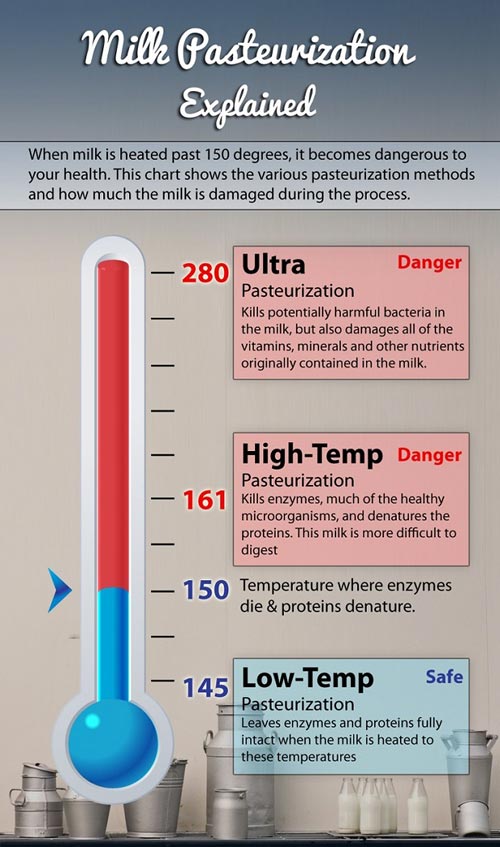 |
|||||||||||||||||
|
|||||||||||||||||
|
Translate this page in your preferred language: |
|||||||||||||||||
| Techniques for preservation of milk : | |||||||||||||||||
| Back | |||||||||||||||||
Ways To Preserve Milk
 Before you start any preservation methods at all, pasteurize your milk. Many people prefer to drink their milk straight from the cow but the idea behind preservation is to keep bacteria from turning the milk bad. If you filter and pasteurize it, you’ll be starting with “clean” milk that will be more likely to keep longer. This is, of course, up to you but I advise it. Salting Salting is important to the preservation of anything and that includes your milk products. Though you probably don’t want to salt your milk before you can it, you definitely want to salt your butter, cottage cheese and other products. This will not only help them last longer but will also give you access to a food in your emergency food supply that has that necessary mineral (and flavor enhancer) in it. Dehydrating If you’ve dehydrated other foods, it may have occurred to you that you could do the same with milk. It’s not so easy to do if you want to preserve the flavor and nutritional value. You also need to have special equipment such as an atomizer that won’t come cheap. You will also need a ton of milk just to yield a pint of dehydrated milk. Skip this idea and just buy powdered milk. Freezing Yes, it’s entirely possible to freeze milk but I recommend not doing so for a couple of reasons. First, if you probably won’t have the electricity to keep the freezer running so your milk will go bad within a couple of days, especially if it’s hot outside. Second, frozen milk is fine to use but it often gets a grainy texture to it. It separates out but that can be dealt with just by shaking it up. Still, the texture thing is an issue and is the main reason that I don’t recommend freezing it for everyday use. Canning Milk Many people don’t realize that milk can be canned, too. Just as with all canning procedures, it’s imperative that you make sure that your jars and seals are super clean. Warm your seals if necessary in order to get the best seal possible. To can milk, start with extremely clean milk. Clean the udder, the buckets and all the equipment in addition to the jars. At the very least, strain it well using a milk sieve or several layers of clean, lint-free cloth such as cheese cloth. Pour the milk into a clean bowl and cover it so that nothing gets into it while you’re prepping the jars. Wash your jars in hot, soapy water and rinse them well. Keep them submerged in hot water until you’re ready to use each them. Fill each jar with milk, leaving a half-inch at the top for headroom. Clean the rims of the jars thoroughly and put the sterilized hot rims and rings on them. Put them in your pressure canner and fill with the recommended amount of water. Place the canner over the hottest part of the stove, on about medium. Bring the pressure to 10 and cook quarts for 25 minutes or pints for 20 minutes. Make sure the pressure stays at 10 or else you’ll need to start the time over. The reason for using a pressure canner is because milk is a low-acid food and is therefore susceptible to botulism found in the soil. Pressure canning brings the milk up to a safe temperature and holds it at that temperature long enough to kill any bacteria. Canned milk will keep up to 2 years and is great for cooking and even drinking though the color will change. It will have a slight caramel color and may taste a bit sweeter or just cooked. Canned milk is great for any recipe that requires milk; however, you can’t make cheese, yogurt or rennet desserts from it because the milk won’t clabber. |
|||||||||||||||||
|
|
|||||||||||||||||
| Back | |||||||||||||||||
|
|||||||||||||||||
| Scroll | |||||||||||||||||
| Division of Veterinary and Animal Husbandry Extension Education Faculty of Veterinary Sciences and Animal Husbandry, R.S. Pura, SKUAST Jammu |
|||||||||||||||||